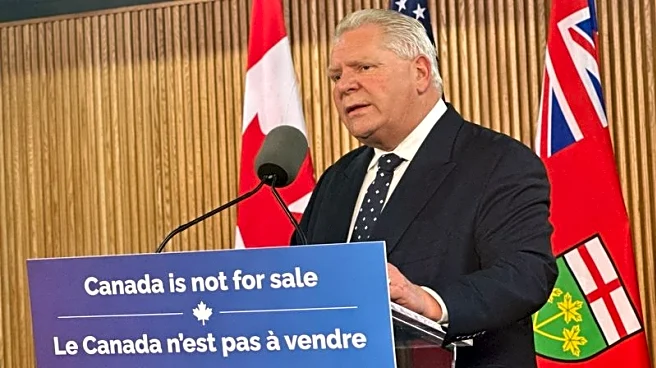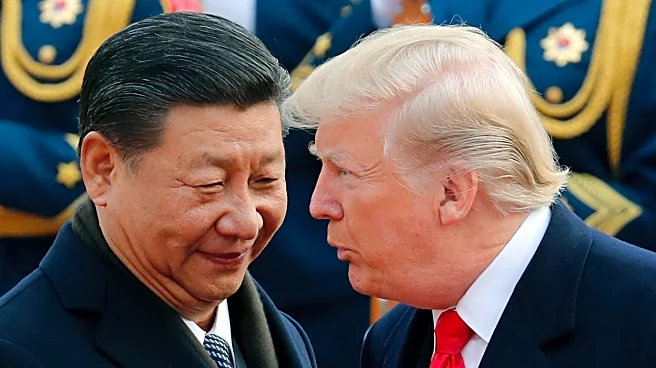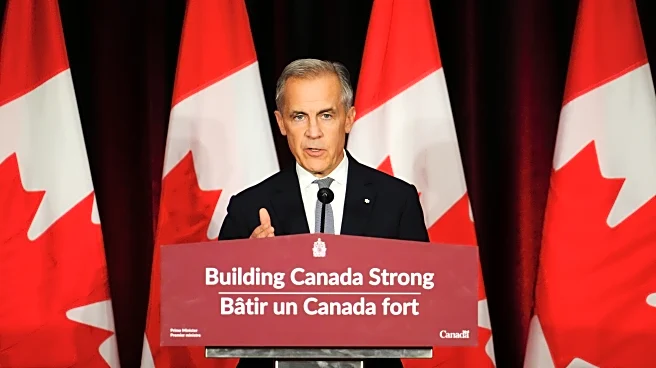What's Happening?
President Trump announced a 10% increase in tariffs on Canadian imports, escalating trade tensions between the two countries. This decision follows the recent breakdown of trade negotiations with Ottawa,
which Trump attributed to a misleading advertisement. The tariff hike is set to impact various Canadian goods entering the U.S., adding to the existing tariffs already in place. This move is part of a broader strategy by the Trump administration to address trade imbalances and protect American industries.
Why It's Important?
The increase in tariffs on Canadian imports could have significant implications for both the U.S. and Canadian economies. For American consumers and businesses, the higher tariffs may lead to increased costs for goods imported from Canada, potentially affecting prices and supply chains. For Canada, the tariffs could result in reduced export revenues and economic strain, particularly in sectors heavily reliant on the U.S. market. This development may also strain diplomatic relations between the two countries, complicating future trade negotiations and cooperation on other bilateral issues.
What's Next?
The tariff increase is likely to prompt responses from Canadian officials, who may seek to negotiate exemptions or retaliate with their own trade measures. Businesses on both sides of the border will need to assess the impact of the tariffs on their operations and consider adjustments to their supply chains. Additionally, the move could influence upcoming trade discussions and agreements, as stakeholders evaluate the broader implications of the U.S.'s trade policy under President Trump.













